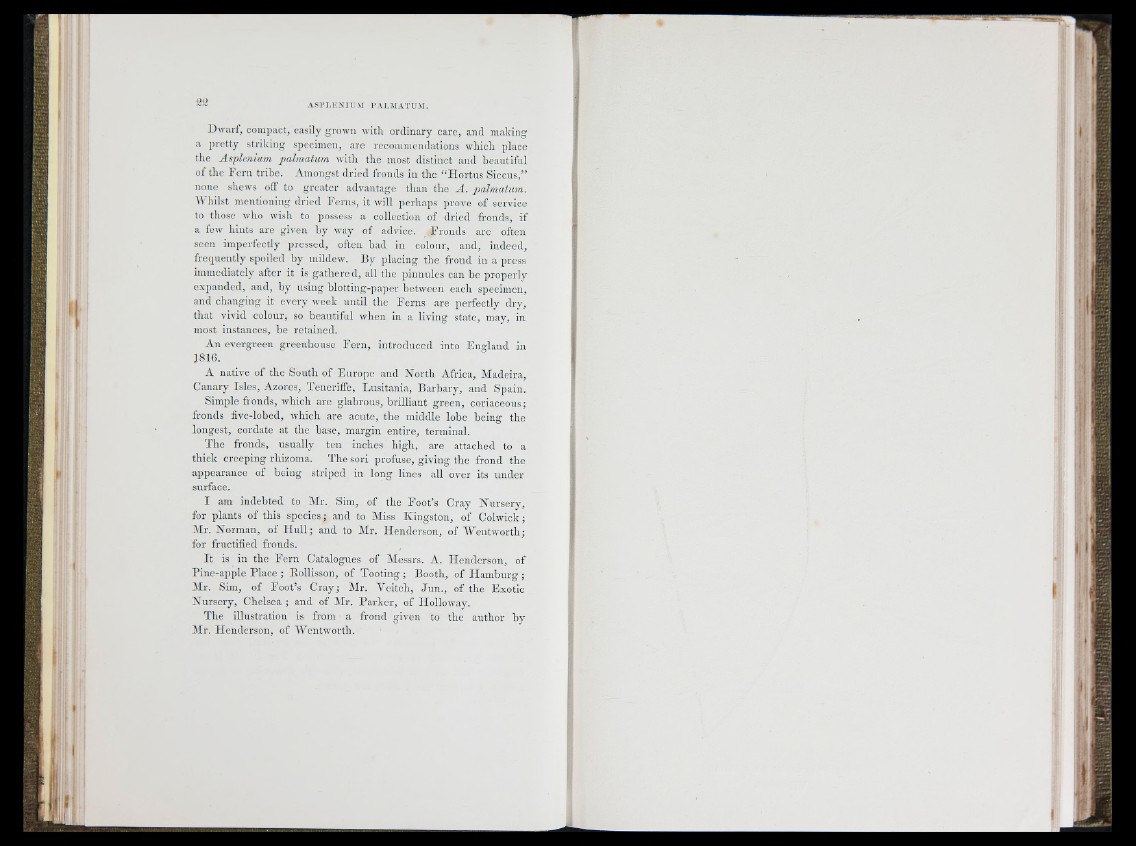
ASFLKNIUAI PALMATUM.
Dwarf, conqiact, easily grown with ordinary care, and making
a ]irctty striking sjiccimen, arc recommendations which [ilaco
the A splénium -palmatum Avith the most distinct and beautiful
of the Fern tribe. Amongst dried fronds in the “ I lo rtu s Siccus,”
none shews off to g reater advantage than the A . piahnatum.
IV liilst mentioning dried F erns, it Avill jAcrhajjs jirovc of service
to those Avho Avish to jiossess a collection of dried fronds, if
a few hints are given by Avay of advice. Fro n d s are often
seen imperfectly pressed, often b ad in colour, and, indeed,
frequently spoiled by mildew. By placing the frond in a press
immediately after it is g a th e re d , all the pinnules can be p roperly
expanded, and, by using b lo tting-paper between each specimen,
and changing it every Aveek until the F e rn s are perfe ctly dry,
th a t vivid colour, so beautiful Avhen in a living state, may, in
most instances, be retained.
An evergreen greenhouse Fern, introduced into England in
1816.
A native of the South of Europe and North Africa, Madeira,
Canary Isles, Azores, Teneriffe, Lusitania, Barbary, and Spain.
Sim^ile fronds, which are glabrous, b rillian t g reen, coriaceous;
fronds five-lobed, Avhich are acute, the middle lobe being the
longest, cordate at the base, margin entire, terminal.
The fronds, usually ten inches high, are attached to a
thick creeping rhizoma. The sori profuse, giving the frond the
appearance of being striped in long lines all over its under
surface.
I am indebted to Mr. Sira, of the Foot’s Cray Nursery,
for jffants of this species; and to Miss Kingston, of Colwick ;
Mr. Norman, of H u ll; and to Mr. Henderson, of WentAvorth;
for fructified fronds.
It is in the Fern Catalogues of Messrs. A. Henderson, of
Pine-apple Place ; Kollisson, of Tooting ; Booth, of Hamburg ;
Mr. Sim, of Foot’s Cray; Mr. Veitch, Jun., of the Exotic
Nursery, Chelsea ; and of Mr. Parker, of Holloway.
The illustration is from a frond given to the author by
j\tr. Henderson, of IVcntworth.